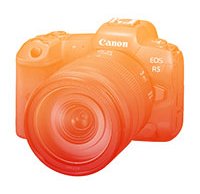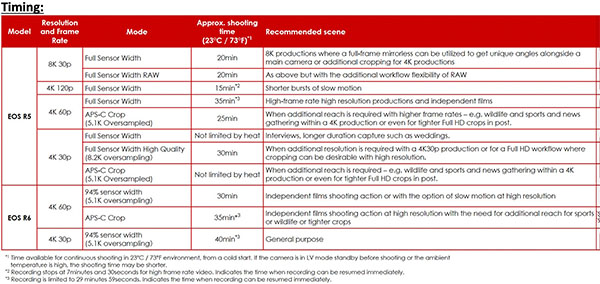Canon responds to EOS R5 and R6 overheating concerns
posted Tuesday, July 14, 2020 at 12:30 PM EDT

Following the announcement of the Canon EOS R5 and EOS R6 mirrorless cameras, excitement has been tempered slightly due to worries about overheating during video recording. With its distinct capability to record 8K video, the EOS R5 has faced the bulk of concern. In response, Canon USA issued a media alert. The alert begins:
'The EOS R5, one of the latest additions to Canon's full-frame mirrorless camera line, offers class-leading autofocus with high-resolution and high frame rate video recording options using the maximum width of full-frame sensor at high bit rates. Inevitably, this combination of features has potential to generate some significant heat, which will limit recording time.'
Canon's alert continues by bringing attention to different steps the company has taken during the design and production of the EOS R5, including the use of magnesium alloy in the camera body itself in order to dissipate heat away from internal components and an 'overheat control' function. Regarding the 'overheat control' function, it is set on by default. Canon recommends leaving this setting enabled and when not actively recording video, turning the camera off entirely. Heat buildup in the Canon EOS R5 can be further reduced by ensuring the camera is kept out of direct sunlight when possible and by using an external fan to dissipate heat.
As part of the media alert, Canon has published a timing chart for the EOS R5 and R6 mirrorless cameras, given varying resolution and frame rate settings.
As you can see in the chart above, the EOS R5 is not limited by heat when recording 4K/30p video using the full sensor width unless the camera is set to utilize 8.2K oversampling. Likewise, the camera is not limited when using an APS-C crop for 4K/30p video recording. However, 4K/60p, 4K/120p and 8K/30p video recording can all be heat-limited. For example, you can record approximately 15 minutes of 4K/120p video at 73°F (23°C) before the R5 overheats. 8K/30p video is estimated for a slightly longer shooting time at 20 minutes.
Canon has also shared a recovery time chart, seen below. With respect to recovery time, given the same temperature conditions, if you wait 10 minutes after recording 8K/30p video, Canon states that you could record about 3 additional minutes of footage. Waiting 20 minutes instead increases the maximum additional recording time to about 8 minutes. A recovery period of 10 minutes after recording 25 minutes of 4K/60p video will yield an additional 10 minutes of recording time before the camera reaches its temperature limit once more.

What about the Canon EOS R6? The R6 can record 4K video as well and shares a very similar design as the R5. Canon states that the R6 can record up to its maximum limit of 29 minutes 59 seconds of 5.1K oversampled 4K/60p video before any heat-related issues arise. 4K/30p video can be recorded for about 40 minutes.
In all cases, it is worth considering that your own results will vary depending upon the ambient temperature and the precise usage scenario. This means you may experience shorter or longer recording times than Canon's stated durations before you encounter issues with overheating.
In response to some people questioning why Canon has not included an internal fan in the Canon EOS R5 camera, Canon states that the fanless design was taken 'in order to maintain the EOS R5's compact size, lightweight construction and weather resistance.' As is always the case with designing a camera and promising high-quality performance, there is a balance that must be struck.
To learn more about the Canon EOS R5 and EOS R6 cameras, check out our previews:
